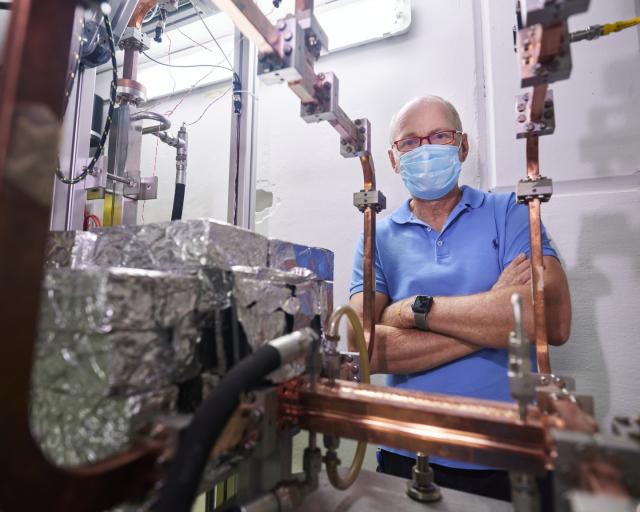Flashes of electrons against cancer
Meet Steinar Stapnes, Compact Linear Collider (CLIC) project leader, in the first of our Knowledge Transfer spotlight series

The technologies behind high-energy physics have historically contributed to great advances in the field of medicine. Since the 1990s, CERN has applied its core expertise to developing novel solutions for advanced cancer radiotherapy. Steinar Stapnes and the team behind the Compact Linear Collider (CLIC) are currently working on CERN’s latest contribution to this, FLASH, an innovative electron radiotherapy technology developed in collaboration with Lausanne University Hospital (CHUV).
With extensive experience from years of working with both accelerator and detector technologies, Steinar has developed expertise that has proven valuable when it comes to spotting opportunities for technology transfer. He started his career as a summer student back in 1984, followed by a fellowship and doctorate in one of the CERN experiments. He went on to work as a professor at the University of Oslo, while simultaneously being affiliated with the Laboratory through leading roles in the ATLAS experiment and, later, as Strategy Secretary for the CERN Council. In 2011, Steinar came to work for CERN full-time on linear accelerator activities, primarily relating to CLIC and International Linear Collider (ILC) research. In September 2020, he was nominated as European representative for the ILC international development team by the International Committee for Future Accelerators (ICFA), the institution that designs it.
During Steinar’s time at the University of Oslo, he engaged in several start-ups, also involving his students, mostly related to sensor technology and medical imaging systems. He continued his efforts within the field of medical and industrial technologies at CERN, where, within CLIC, a conscious decision was made to work more actively on applications. The application of sensor technology in small systems was considered to provide important lessons and experience for larger systems, benefiting the CLIC study directly and engaging industrial suppliers at a scale that was not possible with only R&D funding. “What is special about the work we do at CERN for CLIC is that we are able to make the linear accelerators very compact. This in turn leads to lower costs and easier integration, something that is very valuable for hospitals and other potential users,” explains Steinar. “Electron linacs are used very widely in industry, medicine and research facilities outside our field.”
Steinar has always been passionate about technology transfer activities. He emphasises industrial applications of technologies and their societal impact, particularly in the medical field. Together with his colleague Walter Wuensch, Steinar is one of the driving forces behind the collaboration between CERN and the Lausanne University Hospital for the development of FLASH therapy. The study’s first phase has just successfully concluded. It aims to provide ultra-fast radiotherapy with a higher dose rate than today’s procedures, which is expected to have fewer side effects on healthy tissue.
Learn more about how to get involved in CERN’s knowledge transfer activities here.
